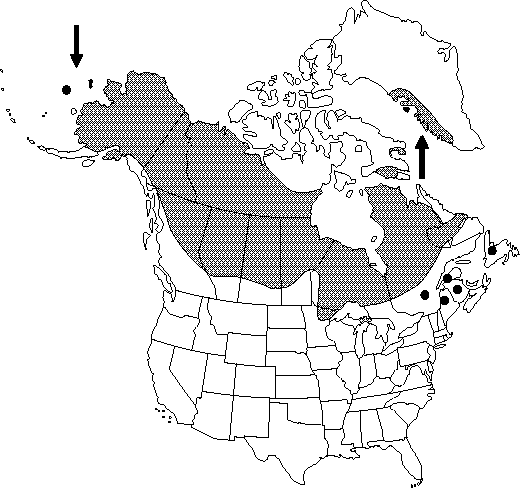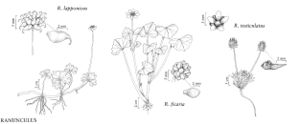Ranunculus lapponicus
Sp. Pl. 1: 553. 1753.
Stems prostrate, buried, rooting nodally, glabrous, not bulbous-based. Tuberous roots absent. Basal leaf-blades reniform, deeply 3-parted, 1.1-2.6 × 1.6-4.3 cm, segments undivided or 1× cleft, margins crenate, apex rounded. Flowers: receptacle glabrous; sepals spreading or reflexed from base, 4-7 × 2-5 mm, glabrous; petals yellow, 5-6 × 2-3 mm. Heads of achenes hemispheric, 5-7 × 8-10 mm; achenes 3.8-4.2 × 2-2.2 mm, glabrous; beak persistent, lanceolate, curved, tip hooked, 1.6-2.4 mm. 2n = 16.
Phenology: Flowering late spring–summer (Jun–Jul).
Habitat: Boggy places and lakesides in tundra, muskeg, and boreal forest
Elevation: 0-900 m
Distribution

Greenland, Alta., B.C., Man., N.B., Nfld., N.W.T., Ont., Que., Sask., Yukon, Alaska, Maine, Mich., Minn., Eurasia
Discussion
Starving individuals among western Eskimo groups ate the soaked plant of Ranunculus lapponicus as a dietary aid before consuming other food (D. E. Moerman 1986).
Selected References
None.
